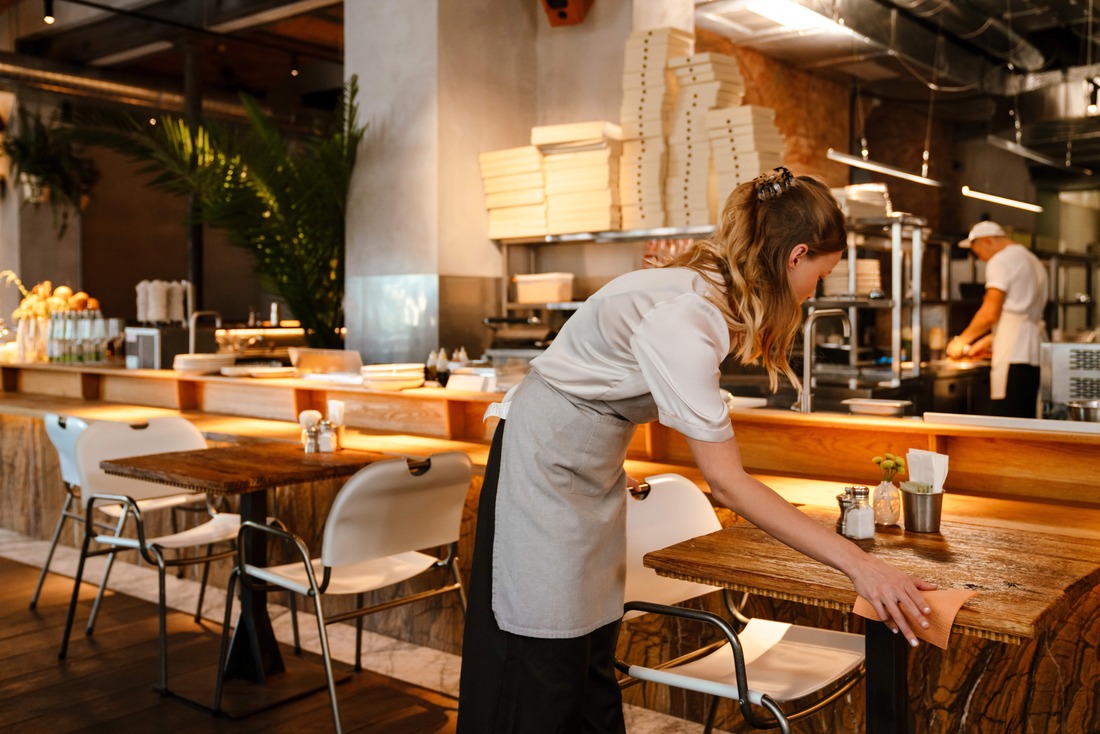In the world of dining out, the experience extends far beyond the taste of the food. Ambiance, service, and cleanliness all play crucial roles in shaping diners’ perceptions and satisfaction levels. Among these factors, cleanliness stands out as a non-negotiable aspect that can make or break a restaurant’s reputation. From the kitchen where culinary creations are born to the table where they are enjoyed, maintaining spotless standards is paramount.
The Kitchen: Where Cleanliness Begins
Behind every delicious dish served at a restaurant lies a meticulously maintained kitchen. In this bustling space, chefs and kitchen staff orchestrate a symphony of flavors and techniques. However, the key to culinary success isn’t just in the recipe; it’s in the cleanliness of the kitchen environment.
First and foremost, hygiene protocols are strictly enforced in professional kitchens. Surfaces are regularly sanitized, equipment is meticulously cleaned, and cross-contamination risks are minimized. This not only ensures the safety of the food but also reflects a commitment to excellence in food preparation.
Moreover, a clean kitchen is an organized kitchen. Proper storage of ingredients, labeled containers, and systematic workflow not only streamline operations but also contribute to a hygienic environment. From the moment ingredients are delivered to the final plating of a dish, cleanliness remains a top priority.
The Dining Area: Where Cleanliness is Showcased
As diners step into a restaurant, the ambiance sets the stage for their culinary journey. Cleanliness in the dining area is more than just wiping tables; it’s about creating an inviting atmosphere that enhances the overall dining experience.
Tables and chairs are meticulously wiped down between guests, ensuring a fresh start for each party. Utensils, glassware, and tableware undergo thorough cleaning and sanitization processes to maintain impeccable standards of hygiene. From the gleam of polished silverware to the sparkle of crystal glasses, every detail matters.
Beyond the physical cleanliness, attention is also paid to the ambiance of the dining area. Lighting, decor, and layout contribute to a welcoming atmosphere that encourages diners to relax and enjoy their meal. A clean, well-maintained dining space not only reflects positively on the restaurant’s image but also enhances diners’ satisfaction.
The Journey of Cleanliness: A Collaborative Effort
Ensuring impeccable cleanliness standards in restaurants is not solely the responsibility of an individual or a specific department; rather, it necessitates a collaborative endeavor across all facets of the establishment. From the kitchen personnel diligently adhering to hygiene protocols to the front-of-house team maintaining cleanliness in the dining area, each member plays an indispensable role in upholding these standards.
Integral to this process are training and education initiatives. Staff members undergo comprehensive training on hygiene practices, encompassing proper handwashing techniques, safe food handling procedures, and sanitation protocols. Regular inspections and audits are conducted to pinpoint areas for enhancement and guarantee adherence to cleanliness standards.
Moreover, cultivating a culture of cleanliness is paramount. Team members are encouraged to take pride in their workspace and assume ownership of maintaining cleanliness standards. By instilling a sense of responsibility and accountability, restaurants can sustain immaculate standards as a collective endeavor.
In addition to these efforts, waste compacting services can further enhance cleanliness standards by efficiently managing and disposing of restaurant waste. Effective waste management not only contributes to a cleaner environment but also ensures compliance with sanitation regulations and promotes operational efficiency. By incorporating waste compacting services into their cleanliness initiatives, restaurants can streamline waste disposal processes and maintain a pristine dining environment.
The Impact of Cleanliness on Reputation and Success
In today’s competitive restaurant industry, cleanliness is not just a nicety; it’s a necessity. Diners have increasingly high expectations when it comes to hygiene standards, and any lapse in cleanliness can have a detrimental impact on a restaurant’s reputation.
Word of mouth spreads quickly, and a single negative experience related to cleanliness can tarnish a restaurant’s image. On the other hand, consistent adherence to spotless standards can enhance a restaurant’s reputation and contribute to its success. Positive reviews praising the cleanliness and hygiene of a restaurant can attract new customers and build loyalty among existing patrons.
Moreover, in the age of social media and online reviews, cleanliness is under constant scrutiny. Diners are quick to share their experiences, both positive and negative, on platforms such as Yelp, TripAdvisor, and social media channels. A reputation for cleanliness can serve as a competitive advantage, distinguishing a restaurant from its peers and earning the trust and loyalty of discerning diners.
Conclusion
From the kitchen where culinary magic happens to the table where diners indulge in gastronomic delights, cleanliness is a cornerstone of success in the restaurant industry. Maintaining spotless standards requires dedication, attention to detail, and a collaborative effort across all establishment levels.
By upholding strict hygiene protocols, fostering a culture of cleanliness, and prioritizing the dining experience, restaurants can ensure that every aspect of their operation reflects excellence. From the gleaming surfaces of the kitchen to the pristine tables in the dining area, cleanliness enhances the dining experience and contributes to a restaurant’s reputation and success. In a competitive industry where every detail matters, cleanliness is the key to winning hearts and stomachs.

